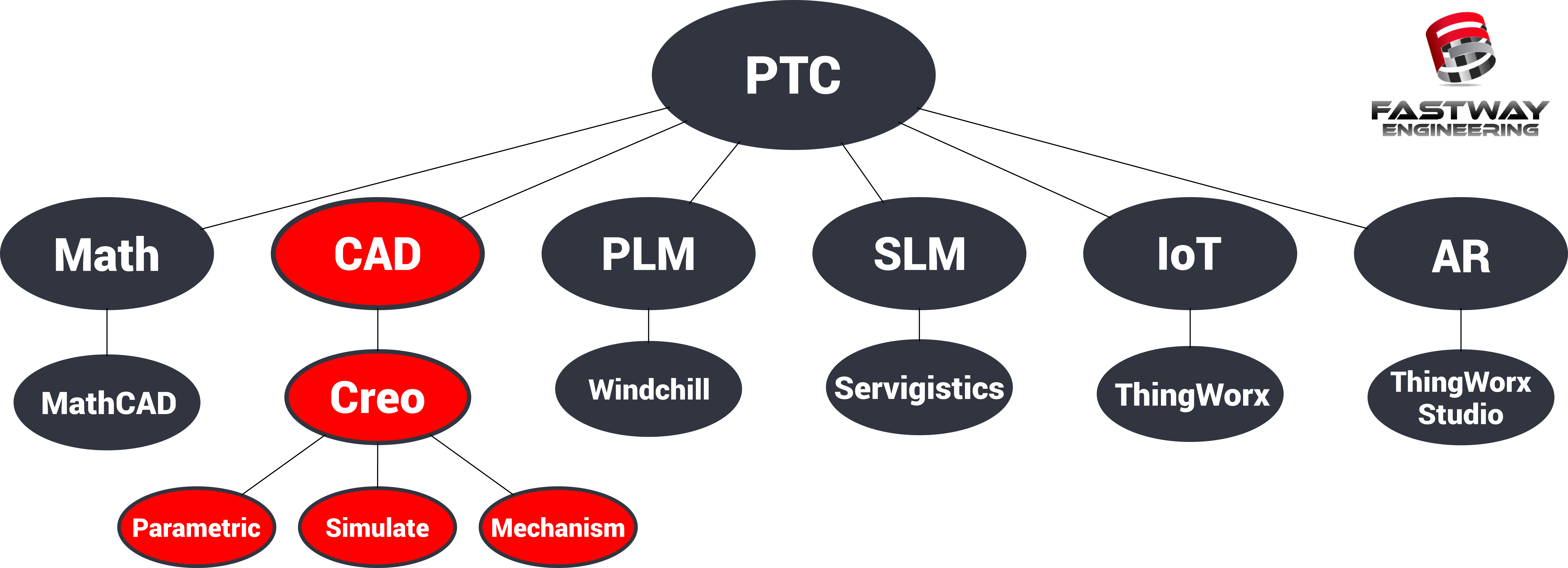Creo Parametric: An Overview of PTC’s CAD/CAE Software
PTC’s roots are firmly cemented in the realm of Computer Aided Design/Engineering (CAD/CAE) via it’s Mechanical Design Software called Creo Parametric (originally Pro/Engineer). PTC now boasts a product catalog of tremendous breadth with Engineering Math, Product Lifecycle Management (PLM), Internet of Things (IoT), and even Augmented Reality (AR) solutions. PTC has now diversified itself to the point of being present in many of today’s most innovative areas of technology and research, as shown with its current portfolio here:

Digital Product Development using AR, PLM, IoT
Although founded around CAD/CAE, PTC’s offering has since expanded to include an entire portfolio of digital product development applications. PTC’s premiere AR program, ThingWorx Studio, requires fast, accurate 3D representations of an environment in order to correctly augment it. Windchill, the web-based PLM solution, relies on the modularity of a 3D assembly to easily create and manage variations of a product to suit customer need. Both of these separate technologies can then be brought together with the inherent IoT-like structure of the ThingWorx platform, meaning that an interactive AR training program can use the information gathered from the PLM system to properly gauge successful instruction: a true revolution in technology.
Creo
Despite this far reach, however, PTC’s primary offering in CAD/CAE – its Creo family of software – is still its most matured and popular product. At its core, the Creo software suite from PTC focuses on interconnecting the modeling and prototyping phases of product development. Included are tools for concept and industrial design, simulation and analysis, and general production readiness. It links these often separated processes by providing fully featured tools as add-ons for their flagship software, Creo Parametric.
While the Creo suite contains dozens of unique tools, familiarity with just a select few can greatly become a designer or engineer’s best asset.
Creo Parametric
As the main hub for all Creo software, Creo Parametric is a robust modeling tool whose focus is on providing modularity and instant feedback for design changes. Its surfacing capabilities allow users to turn their 2D sketches into full 3D models by either parametrically building or organically shaping complex surfaces. Creo Parametric’s “Unite” toolset even features support for importing geometries from competing applications.
Creo Parametric also supports 2D drafting in addition to its 3D modelling capabilities, meaning that a designer can easily switch between the 3D model and its corresponding 2D draft, with either view reflecting changes made on the other.
The Creo suite’s emphasis towards real, manufactured products is demonstrated by many of Creo Parametric’s features.
Surfacing
Creo Parametric’s surfacing abilities are some of its most mature. Supporting both parametric and freestyle surfacing, Creo Parametric lets a designer change every curve of a geometry by using either of these intuitive methods.
With parametric surfacing, changes can be made using traditional modelling tools, where sweeps, blends, and extensions are used to acquire precise, tightly defined dimensions. These features are ideal for a user already familiar with other modelling software, as the use of many of the same techniques will have a designer feeling at home. The parametric nature of this method allows models to be easily modified in a predictable, scalable manner.
While the parametric approach to surfacing is Creo Parametric’s signature feature, its newer support for freestyle surfacing gives users a fully viable alternative. Shapes can be molded like clay, meaning that a part can be shaped just from a single starting figure. This feature is best utilized alongside a 2D concept sketch, as the curves of the sketch can then be easily matched by deforming a starting model.
Sheetmetal
Creo’s manufacturing focus is once again exemplified with its sheetmetal design features, which allow for the creation of sheetmetal parts that are ready for manufacturing off the shelf. The sheetmetal toolset permits the user to bend and shape the metal only in ways that would be feasible in industrial manufacturing. This lets the user focus on simply designing a product, rather than worrying about how it will be manufactured.

Creo Parametric merges Design, Manufacturing, and Analysis of Sheetmetal parts into a single, connected environment.
Due to its role in the early stages of a product’s 3D life, Creo Parametric can be integrated with many of the later discussed add-ons. Using this functionality, Creo Parametric can be expanded from a capable modelling tool to a Swiss army knife of Computer-Aided Design and Engineering applications.
Simulation
After creating a model in Creo Parametric, Creo Simulate can be used to properly test structural characteristics, minimizing the need for physical prototypes. Creo Simulate is both an embedded capability for Creo Parametric as well as a standalone program. As PTC’s main structural and thermal analysis tool, Creo Simulate is used for any level of Finite Element Analysis (FEA), from simple stress testing to computer aided optimizations. Its inter-connectivity with Creo Parametric allows designs to be tweaked and adapted on-the-fly based on simulation results.
If more in depth analysis is required, PTC offers add-ons to Creo Simulate such as Creo Advanced Simulation Extension, which supports non-linear stresses and transient thermal analysis.
Mechanisms
While Creo Simulate is used to model the structural integrity of a product under various conditions, Creo’s Mechanism capability is meant for testing the actual mechanics of a product during operation. This makes Mechanism the go-to software for testing movements of a design, adjusting clearances, and fully visualizing the effect of macroscopic displacements on the design.
Creo Simulate can model an object's full range of motion, quantifying results in order to analyze changes
Regardless of which Creo product you choose, the next step is to become fluent in how to use that product as a time-saving tool, minimizing time spent in the learning stage and maximizing your designing productivity.
Fastway Engineering offers innovative training classes aimed at designers looking to expand their expertise to the world of computer-aided simulation software, such as those found within the Creo suite. Classes are offered for both Creo Simulate and Creo Mechanism, meaning that you can become fully equipped to model both minute structural stresses and full mechanical movements for your product – all before it leaves your computer.

